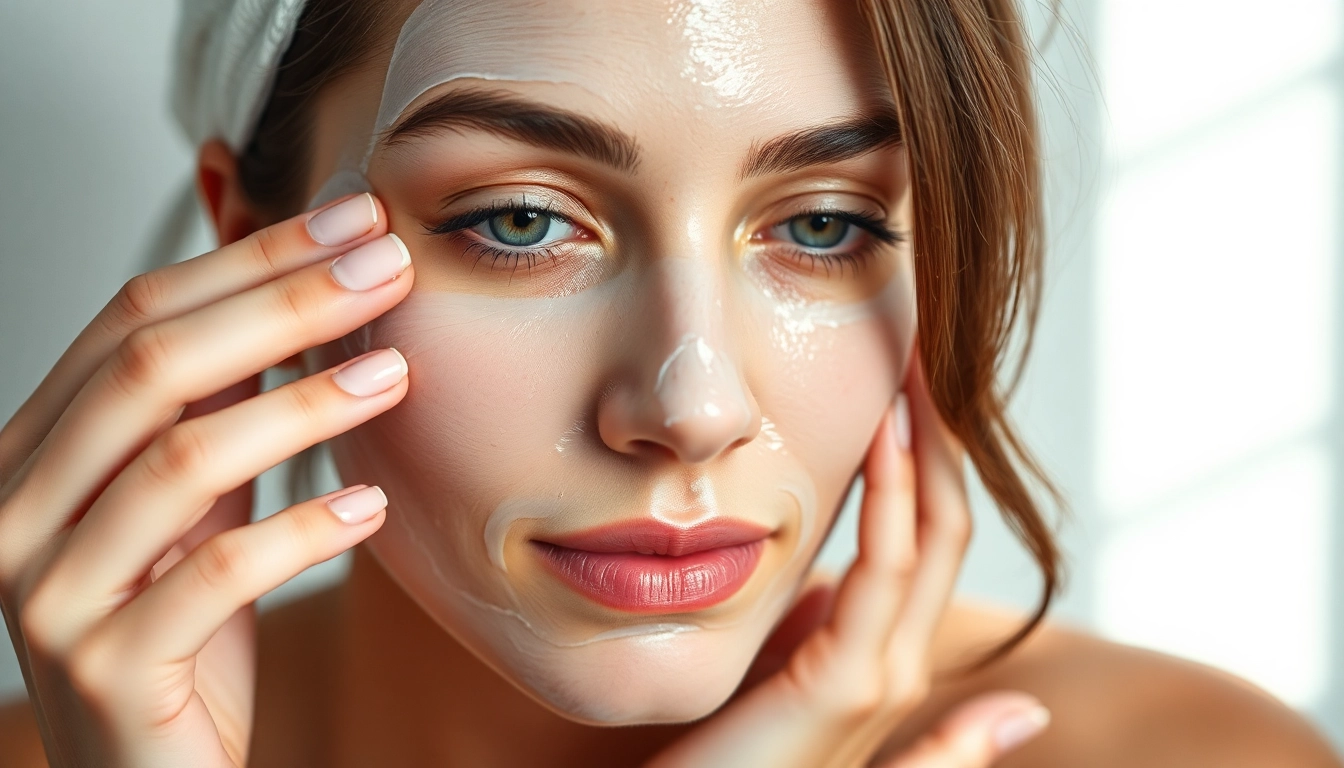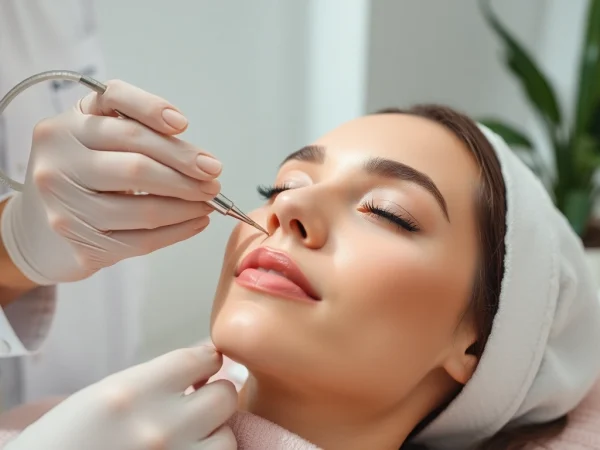Revitalize Your Skin: The Essential Face Mask Guide for Glowing Complexion
Understanding Face Masks: Types and Benefits
1. What Are Face Masks?
Face masks are specialized skincare products designed to deliver a concentrated dose of active ingredients to the skin. They come in various formulations and textures, providing numerous benefits depending on the type of mask and its ingredients. From hydrating to exfoliating, face masks are an essential part of many skincare routines, aimed at enhancing overall complexion and addressing specific skin concerns. Whether you’re a skincare novice or an aficionado, incorporating a face mask into your regimen can be a transformative experience for your skin.
2. Types of Face Masks
Face masks can be categorized into several types, each formulated for specific purposes:
- Cream Masks: These are rich in moisture and are perfect for hydrating dry skin.
- Clay Masks: Ideal for oily or acne-prone skin, clay masks help absorb excess oil and detoxify the skin.
- Peel-off Masks: Formulated to remove dead skin cells, impurities, and unclog pores by peeling off after application.
- Sheet Masks: Soaked in serums, these disposable masks deliver intense hydration and active ingredients directly to the skin.
- Hydrogel Masks: Popular for delivering hydration and soothing properties, these masks conform closely to the skin.
3. Key Benefits of Using a Face Mask
The benefits of incorporating face masks into your skincare routine are vast:
- Enhanced Hydration: Many masks deliver a surge of moisture, essential for keeping skin plump and elastic.
- Improved Skin Texture: Masks can help exfoliate rough patches and promote smoother skin.
- Targeted Treatment: Specific masks can address needs such as acne, deep cleaning, anti-aging, and brightening.
- Relaxation and Self-Care: The process of applying a mask can provide a calming experience, contributing to overall wellbeing.
Choosing the Right Face Mask for Your Skin Type
1. Oily vs. Dry Skin
Understanding your skin type is crucial for choosing the right face mask. For oily skin, clay masks containing bentonite or kaolin clay are highly effective in controlling oil production and minimizing breakouts. These masks work by absorbing excess sebum and drawing out impurities from the pores.
In contrast, individuals with dry or dehydrated skin should look for hydrating masks formulated with ingredients like hyaluronic acid, glycerin, or natural oils. Cream-based masks often work wonders, offering moisture retention and soothing dry patches to restore skin vitality.
2. Sensitive Skin Solutions
If you have sensitive skin, it’s essential to select face masks that are gentle and hypoallergenic. Look for those that contain soothing ingredients like aloe vera, chamomile, or oatmeal. Avoid masks with harsh chemicals, fragrances, or exfoliating agents that can trigger irritation. A patch test is also advisable before the main application to ensure your skin reacts positively.
3. Targeting Specific Concerns with Face Masks
Different face masks can be employed to target specific skin concerns effectively:
- Acne: Clay and charcoal masks can help detoxify the skin and reduce the appearance of blemishes.
- Aging: Masks rich in antioxidants, peptides, and retinoids can promote elasticity and reduce fine lines and wrinkles.
- Dark Spots: Brightening masks containing vitamin C and licorice extract can even skin tone and diminish discoloration.
How to Properly Apply a Face Mask
1. Step-by-Step Application Guide
Applying a face mask is an uncomplicated process, but following these steps can enhance its effectiveness:
- Cleansing: Start with a clean face. Use a gentle cleanser to remove makeup, dirt, and excess oils.
- Exfoliating: Exfoliate your skin to remove dead skin cells, helping the mask penetrate better.
- Application: Apply an even layer of the mask with your fingertips or a brush, avoiding sensitive areas like the eyes and lips.
- Timing: Leave the mask on according to the instructions – usually between 10 to 30 minutes.
- Rinsing: Rinse off the mask with lukewarm water and pat your face dry with a clean towel.
- Moisturizing: Follow up with your regular moisturizer to lock in hydration.
2. Tips for Maximizing Effectiveness
To ensure you get the most out of your face mask, consider these tips:
- Apply masks at night before bedtime. This allows for overnight skin recovery.
- Use a facial steamer or hot towel to open pores before applying a mask, enhancing absorption.
- Don’t overuse masks; stick to the recommended frequency, usually 1-2 times weekly depending on the type.
3. Common Mistakes to Avoid with Face Masks
Avoid the following pitfalls for the best results:
- Over-exfoliating before applying the mask, which can irritate the skin.
- Leaving the mask on for too long, which can lead to dryness or irritation.
- Not following up with moisturizer after rinsing off the mask.
Integrating Face Masks Into Your Skincare Routine
1. Frequency of Use
The frequency of face mask use should align with your skin’s needs and the specific product instructions. For general skincare maintenance, 1-2 times a week is adequate. However, those with specific concerns like acne might benefit from more frequent applications, while dry skin types may want to limit use to avoid irritation.
2. Pairing with Other Skincare Products
To get optimal results, layer your skincare products appropriately. For instance, after cleansing and exfoliating, use your face mask, followed by serum and moisturizer. Avoid mixing multiple treatment products at the same time to minimize the risk of irritation.
3. Seasonal Face Mask Strategies
Your skin’s needs may change with the seasons, requiring adjustments in your mask choices:
- Winter: Focus on hydrating masks to combat dry air and indoor heating.
- Spring: Brightening masks can rejuvenate post-winter dullness.
- Summer: Lightweight, oil-absorbing masks can help manage excess shine and breakouts.
- Fall: Nourishing masks can prepare your skin for the drier months ahead.
Face Masks and Skincare Trends: What to Watch
1. Innovative Ingredients in Face Masks
The skincare industry is continuously evolving, with new ingredients being incorporated into face masks. Look out for masks featuring:
- Cannabidiol (CBD): Known for its anti-inflammatory properties, CBD-infused masks aim to soothe irritated skin.
- Probiotics: To promote a healthy skin microbiome, masks containing probiotics can enhance skin barrier function and overall resilience.
- Exotic Botanicals: Ingredients such as prickly pear, seaweed, and superfoods like spirulina are emerging favorites for their nutrient-rich profiles.
2. Eco-Friendly and Sustainable Options
With a growing focus on sustainability, many brands are now offering eco-friendly face masks. These may include:
- Biodegradable sheet masks using natural fibers.
- Forms of packaging that reduce plastic use and promote recyclability.
- Ethically sourced ingredients, ensuring fair trade practices and minimal environmental impact.
3. The Rise of DIY Face Masks
Homemade face masks have become increasingly popular due to their affordability and customization potential. Common DIY recipes use everyday ingredients such as:
- Oatmeal and honey for soothing masks.
- Avocado for nourishing and moisturizing properties.
- Coffee grounds for gentle exfoliation.
While DIY masks can be fun and effective, ensure you research the ingredients to avoid potential irritants.










